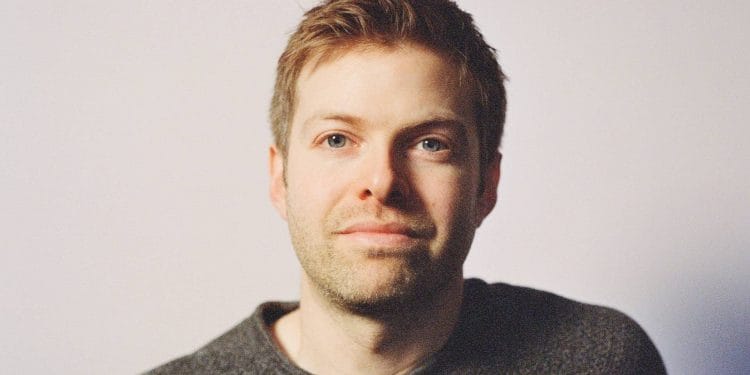Stage Designer Sámal Blak was born in the stunning and remote Faroe Islands. He splits his time between the growing Faroese theatre & TV industry, European touring opera. And he’s having a moment here in the UK
His award-winning portfolio of theatre & opera productions over the past 15 years includes a strong relationship with British-Persian theatre director Bijan Sheibani. Starting with a student production at RADA, together they’ve since worked at the Bush, Hampstead, Almeida, HOME… and in January he made his debut at the National Theatre with Beth Steel’s Till the Stars Come Down.
This is followed by the UK’s first ever Faroese production at the Barbican, Castle of Joy. For this, he takes us inside the world of Pól Jóhannus Poulsen (aka Joy).
You’re working on three shows in London this year, what can you tell us about them?
Castle of Joy is a Faroese production, at the Barbican; Till the Stars Come Down, written by Beth Steel and directed by Bijan Sheibani is at the National Theatre; and The Cord is a new play written and directed by Bijan Sheibani, at the Bush Theatre.
In all three productions I have worked in collaboration with the writer, and in both Castle of Joy and The Cord, the playwright is also the director. Till the Stars Come Down and The Cord are world premieres, and Castle of Joy will be the first time a Faroese company has performed a Faroese production in the UK.
You were born in the Faroe Islands, how do you think your experience of growing up there has influenced your work?
My parents were folk musicians who, during my childhood, brought me and my siblings along as they toured, playing concerts all over the world. This gave me the opportunity to experience art and music of many cultures, and I gained an appreciation of what it means to be part of an artistic team.
Growing up in the Faroes, I had the opportunity to work with various art forms such as sculpture, painting and printmaking, as well as to work on collaborative projects in theatre and music performance. In such a small community, everyone is visible and within reach, so the distance between amateurs/developing artists and professional, established artists is not as great, and unofficial mentoring occurs often. I had the opportunity to develop my skills through collaboration with established artists.
Living in a remote place also makes it necessary to find creative solutions, since materials and resources that you normally find in larger urban centres simply aren’t available.
Castle of Joy will be the UK’s first Faroese production, how have you approached designing it?
The story revolves around Pól Jóhannus [nicknamed Joy], who creates a tangled maze of a building, his “Castle of Joy”. I approached it in the spirit of Pól Jóhannus, a character with a playful mind; therefore, a playful set. Live music is an integral part of the storytelling, so we wanted the set and props to function also as a percussive instrument, blurring the lines between musical instrumentation and set design.
The central structure of the set contains the outline of a house, representing the protagonist’s home village, which also transforms into an isolation cell in Denmark. I wanted to have as the centre of the set a simple structure with straight lines, representing the rigid society in which Pól Jóhannus lived and where he ultimately built his Castle of Joy with crooked lines.
What are you looking forward to most about sharing Faroese culture with audiences in London?
It feels wonderful to be able to share our work with a wider audience, as we are merely some
55,000 people living in the Faroes. The Faroe Islands has its own language, history, politics and identity. I do most of my theatre work abroad, in the UK, Europe and Asia; thus, I am usually dealing with someone else’s culture and identity. I am excited that we, as a Faroese collective, can create a new Faroese work in our own home country and bring it to London and the UK, where I have studied and worked on a regular basis for the past 18 years. As it looks back in the not-too distant past, Castle of Joy is a story about, among other things, being colonised and how important it is for us to keep ourselves and our culture alive.
And you’ll also be making your debut at the National Theatre with Beth Steel’s Till the Stars Come Down. Did you take a different approach to that production?
My basic approaches to all three plays are quite similar. I tend to create spaces that are flexible for the directors to develop the play in and where the performers play an active role in transforming the stage. Often, the designs deal with the themes of the play rather than a naturalistic location. Designing a set like this demands that the entire creative team work closely together and give each other space.
What would you say to anyone thinking of booking to see the shows you’re working on?
All three shows are on relatively small stages, where the set design draws the audience into the action. Both Castle of Joy and The Cord use live music as an integral part of the play. While all three plays deal with deeply emotional issues, they do this in quite different ways. You can expect to laugh a lot at Till the Stars Come Down, while Castle of Joy is a much more serious treatment of what can happen to someone who is seen by others/society as different, and The Cord deals with the arrival of a new baby and the complex impact it has on a family.
Till the Stars Come Down is at the National Theatre until 16 March
Det Ferösche Compagnie’s Castle of Joy is at The Pit, Barbican, 28 February–2 March
The Cord is at the Bush Theatre, 12 April – 25 May

















